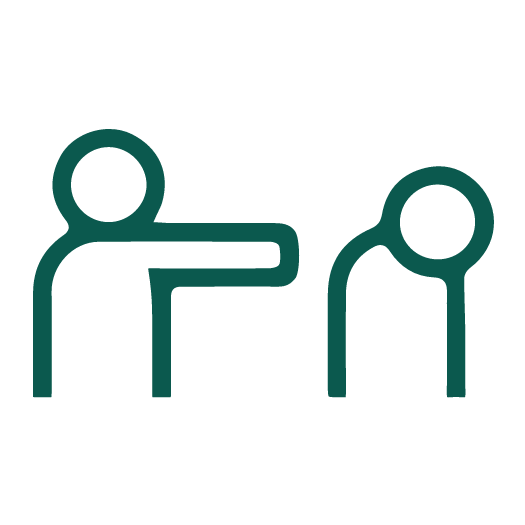Saprea Support Groups > Group Materials >Trauma’s Impact on the Brain and Body
Each Saprea Support Group meeting begins with 'Group Leader A' reading the script while participants follow along. The script will be the same for every group meeting. Click here to find the script and get your meeting started. Below you will find the additional meeting materials for this course.
Group Activity
Taking Conscious Action
For Option 2 of this activity, the group leader will need to provide some coloring pages and coloring utensils.
Almost any activity can become automatic when it is a routine part of your life. Your brain has an amazing ability to help you become more efficient by building habits. However, when you’re unaware of your automatic responses, you lose some ability to consciously make a choice. This activity will help you become more familiar with your automatic responses by interrupting them with something deliberate. It will likely feel strange at first—even with the smallest of actions—but that awkwardness means you’re leaning into a challenge and your brain is adapting to something new.
activity steps
Starting small:
01
Let’s explore automatic and deliberate responses by trying a few simple movements.
02
First, clasp your hands together and interlock your fingers. Note which thumb is currently wrapped on top of the other.
03
Relax your hands, then clasp them together again, this time interlocking your fingers so that the other thumb is wrapped on top. Keep your fingers interlocked for a few more seconds, noting any differences you may feel between this position and the first one.
04
Next, cross your legs. Note which leg you’ve crossed over the other and how much thought you put into the movement. Then cross your legs the other way, being mindful of which leg is now on top. Keep your legs crossed for a couple of seconds, noting any differences you may feel between this movement and the hand-clasping movements you did before.
If time allows
Option 1—Writing Activity
- Pick up a pen with your dominant hand. Take a moment to write down the letters of the alphabet. Or if you’d rather, play a game of Tic-Tac-Toe with yourself or write down the names of your favorite breakfast cereals.
- Next, repeat the same activity using your non-dominant hand, noting the differences you may feel between this task and the prior one.
Option 2—Coloring Activity
- With the coloring pages and utensils provided by your group leader, color for a couple of minutes using your dominant hand.
- Next, continue coloring using your non-dominant hand, noting any differences you may feel.
Wrap-up
After you finish, think about the different movements and activities you just did. Which ones felt more automatic? Which ones required more effort and focus? Which part of the activity felt the most frustrating? During which part did you feel the most mindful?
Grounding Exercise
Paced Breathing
Think of your breath as an anchor that holds you to the present. Your breathing serves you right now, in this moment. You cannot take breaths for the past or for the future—only for your present needs.
So let’s begin.
Activity Steps
01
Take a moment to get comfortable. Close your eyes or soften your gaze.
02
Rest a hand on your chest or stomach if it helps you feel calm.
03
Focus on the image of a breathing heart, one that swells with each inhale and compresses with each exhale.
04
Inhale through your nose, envisioning your heart expanding. Count four heartbeats. 1, 2, 3, 4.
05
Hold your breath, counting two heartbeats. 1, 2.
06
Exhale through your nose, envisioning your heart compressing. Count six heartbeats. 1, 2, 3, 4, 5, 6. The key is to try making the exhale longer than the inhale to help calm the body.
07
Repeat this for 2–5 minutes, or if you are using the exercise to help manage a trigger, repeat these steps as many times as necessary to feel grounded in the present moment. You may also choose to place both hands over your heart as you envision it expanding and contracting. As your heartbeats slow, your breathing will get deeper, continuing to calm you.
Video Option
Watch this guided breathing video, timing your breathing to the opening and closing of the lotus petals. Repeat for 2–5 minutes, or as long as needed.
Hosting Your Meetings Off-Line? Download All of the Materials You Need Here:
Download this resource (PDF)
Download Meeting script (PDF)
Additional Resources
If you are interested in learning more about this topic, we invite you to explore these additional resources.
Done With This Topic? Jump to the Next.

Healing from child sexual abuse involves the practice of Acknowledgement, which is looking with clarity and self-compassion at where you…

Understanding the Limbic System
Part of understanding trauma’s impact on the brain is learning about the limbic system and its drive to protect us…

Understanding Shame
Survivors of child sexual abuse often experience persistent and intense feelings of shame, despite the truth that you did nothing…
